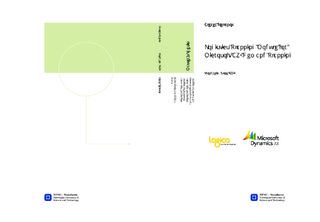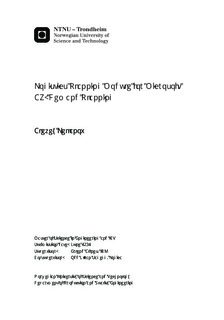| dc.description.abstract | One could hardly find a person who would disagree that the information technology is essential part of any business today. In the same way it is known how a proper demand planning process can assist an organization in making correct decisions at the right time and is therefore also vital for its success. Having all this in mind, one could expect the modern IT systems to have a good support for demand planning, but this is not always the case, like it is with the ERP system Microsoft Dynamics AX 2012. This ERP system has only limited support for forecasting, and Logica, a consultancy company offering among others Dynamics AX to its customers, in collaboration with Norwegian University of Science and Technology (NTNU), would like to develop this functionality seamlessly built into AX 2012. This master thesis is about making a research at the demand planning and supply chain management fields in order to identify current state-of-the-art demand planning process and requirements specification for a Demand Planning Module to support such process, and, based on this, find a way to seamlessly build Demand Planning Module’s functionality into AX 2012 with all the benefits such smooth integration provides. The research presented in this work, provides first a short presentation of ERP systems and their disability to properly support supply chain management, concluding with remarks about ERP II vision being an attempt to counter this disability. Microsoft Dynamics AX 2012 and its insufficient demand planning functionality are then specifically addressed. After that the demand planning field is studied, a common demand planning framework is proposed. The framework describes the entire, what is believed, state-of-the-art demand planning process including (i) understanding of purpose, benefits and conditions of demand planning process, (ii) structuring data in a way that a quality forecasting process can be run, (iii) the forecasting process itself which uses qualitative, quantitative and collaborative approaches and (iv) critically reviewing and analyzing the demand planning process and looking for the ways to improve it. Afterwards, a short classification of forecasting methods is presented, dividing the methods into qualitative and quantitative, where the latter ones are further partitioned into naïve, time-series, causal and simulation. Some of the forecasting techniques are described in details while others are briefly presented. It is also shown that forecasts are always wrong and there is a need for error metrics to evaluate the forecasts’ performance; the most common metrics are described. This theory study, and first and foremost the common framework, results in a generic requirements specification for Demand Planning Module, which is then compared to the AX 2012 forecasting functionality. Many functional gaps are identified by this comparison and an attempt to solve them via developing user-oriented solution design and corresponding functional modifications specifications is given. The attempt, though, proved to have strong limitations in form of the author’s insufficient training and in-depth understanding of AX 2012 and its processes’ correlation to each other. | nb_NO |

